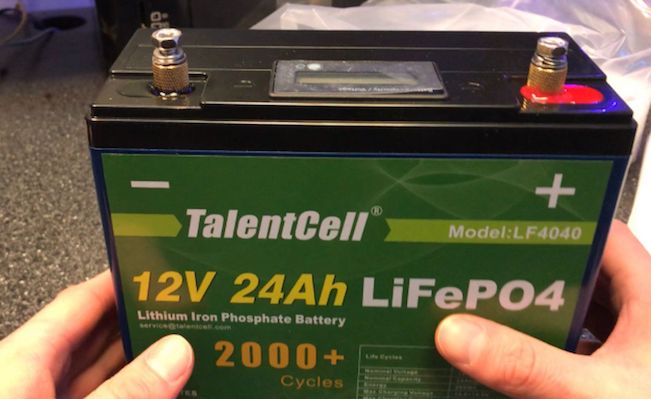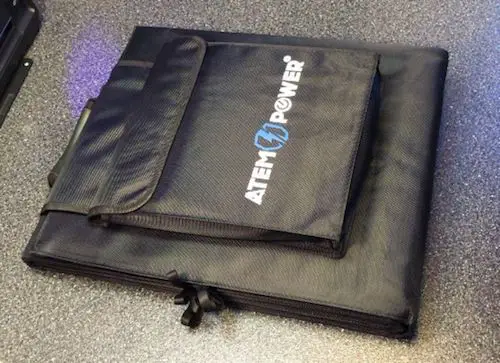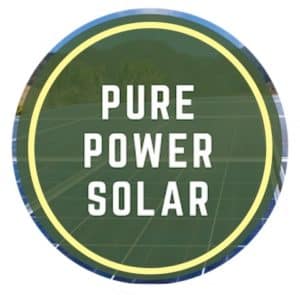Portable solar panels have emerged as a game-changer, providing flexibility and efficiency in harnessing the sun’s rays wherever we go. From camping adventures to emergency situations, these compact marvels are transforming the way we power our devices and lives.
In this blog post, we will explore five exciting ways portable solar panels are being utilized in our daily lives.
1. Off-Grid Adventures

One of the primary uses of portable solar panels is in outdoor activities such as camping, hiking, and backpacking.
These panels allow outdoor enthusiasts to generate electricity on the go, providing a convenient and eco-friendly way to charge their electronic devices like smartphones, GPS devices, cameras, and even camping lights.
With advances in technology, portable solar panels have become lightweight and foldable, making them easy to carry in backpacks and unfold at campsites to soak up the sun’s energy.
Similar: 5 Best Portable Solar Panels for Camping & Buyer’s Guide
2. Emergency Power Backup

In emergency situations like natural disasters or power outages, portable solar panels can be a lifeline. These panels offer a reliable source of power when traditional electrical grids fail, allowing people to charge essential devices like phones, radios, and medical equipment.
Some portable solar panels are also equipped with integrated battery packs, enabling energy storage for later use when sunlight is not available, making them ideal for unpredictable situations.
I had to prepare for an extended power outage over the summer due to a hurricane warning in my community in Florida. I had a couple of portable 120W panels ready in case the power went out, and luckily, I never had to use them. But I would’ve been a lot more worried if I didn’t have them on hand. I would’ve used them to recharge our phones as well as my EcoFlow River power station.
3. Sustainable Travel
As awareness of environmental issues grows, eco-conscious travelers are turning to sustainable travel options. Portable solar panels are making their way into the travel gear of responsible globetrotters.
Whether it’s a camping trip, road trip, or sailing adventure, these panels provide a clean energy solution that reduces the carbon footprint of travel. In some regions, solar-powered backpacks and suitcases have also been developed, offering an innovative way to charge devices while on the move.
4. Remote Work and Digital Nomadism

The rise of remote work and digital nomadism has led to an increased need for reliable power sources outside traditional office setups.
Portable solar panels cater to this demand, allowing remote workers to set up their makeshift offices anywhere under the sun. They can recharge laptops, tablets, and other essential electronics, ensuring that productivity is not hampered by the lack of power outlets.
5. Educational and Humanitarian Initiatives
Portable solar panels play a crucial role in humanitarian efforts and education initiatives in remote and underserved regions. Many organizations distribute these panels to communities without access to reliable electricity, empowering them with a renewable energy source for lighting, charging devices, and running basic electrical appliances.
Additionally, these panels are instrumental in providing electricity to schools and community centers, enhancing educational opportunities for children and adults alike.
My Go-to Portable Solar Panel

The portable solar panel that I use the most often is the Elecaenta 120W solar panel. I’ve used it so often that I bought a second one to use with my portable power stations. It’s the most reliable panel that I’ve tested because it has:
- A high efficiency
- Several different connectors for charging
- It’s compact
- It has a long charging cable for easy setup
You can read more about it in my blog post here: ELECAENTA 120W Foldable Solar Panel Review (Testing & Comparison).
What Do You Need for Portable Solar Power?
Whether you’re an outdoor enthusiast, a digital nomad, or someone concerned about emergency preparedness, harnessing the power of the sun on the go is now within reach. But what exactly do you need to get started with portable solar power?
In some cases, you only need a portable solar panel because it has the ability to charge your small devices directly (for example, the Nomad 7 or Nomad 10 solar chargers). But in other cases where you want to store your solar power, there are a few more components needed.
1. Portable Solar Panels
The heart of any portable solar power setup is, of course, the solar panel itself. When choosing portable solar panels, consider factors like wattage, size, weight, and durability. High-quality panels are often made with efficient monocrystalline or polycrystalline cells and come with protective layers to withstand rugged outdoor conditions. Additionally, foldable and lightweight designs are popular among outdoor enthusiasts and travelers for easy transportation.
2. Charge Controller
A charge controller is a vital component in your portable solar power system. It acts as a regulator between the solar panel and the battery, ensuring that the battery is not overcharged or damaged. Charge controllers come in two main types: PWM (Pulse Width Modulation) and MPPT (Maximum Power Point Tracking). While PWM controllers are more budget-friendly, MPPT controllers offer higher efficiency, especially in low-light conditions, making them the preferred choice for many users.
3. Rechargeable Battery

To store the solar energy generated during the day for use at night or during overcast conditions, you’ll need a rechargeable battery. The battery capacity you choose depends on your power requirements and how long you expect to be without access to direct sunlight. Lithium-ion batteries are a popular choice due to their high energy density, lightweight nature, and longer lifespan compared to lead-acid batteries.
4. Inverter (Optional)
If you plan to power AC devices or appliances, you will need an inverter. The inverter converts the DC (direct current) electricity generated by the solar panels and stored in the battery into AC (alternating current) electricity, which is what most household devices and electronics use. However, if you only need to charge DC devices like smartphones, tablets, and laptops, you can skip the inverter and connect them directly to the battery via USB ports or other compatible outlets.
5. Connectors and Cables

To connect all the components of your portable solar power system, you’ll need appropriate connectors and cables. Ensure that the connectors are compatible with the solar panels, charge controller, battery, and any other devices you plan to power. High-quality cables with sufficient gauges will help minimize energy loss and ensure efficient power transmission.
6. Carrying Case or Bag

Since portability is a key advantage of these systems, investing in a durable and weather-resistant carrying case or bag is highly recommended. A well-designed case will not only protect your equipment during transit but also keep everything organized and easily accessible.
Some portable solar panels fold into a carrying case, like my Atem Power 200W panel pictured above. This model has a velcro pouch and a rubber carrying handle included.
What Can I Run off a Portable Solar Panel?

Portable solar panels can run power to devices like your smartphone, battery bank, GPS, and other small electronics throughout the day. Large portable solar panels, typically rated at 100W or more, can reliably recharge portable power stations and laptops. These panels can also charge multiple devices simultaneously depending on the number of available DC outputs.
Depending on the panel’s output, they can be used to directly run power to small DC-powered fans and DC fridges, but doing so would require a consistent amount of sunlight. In most cases, it’s best to use your portable solar panel to recharge batteries, whether it’s a smartphone, laptop, or battery bank.
Final Thoughts
By understanding the essential components required for a portable solar setup, you can embark on outdoor adventures, be prepared for emergencies, and even power your digital nomad lifestyle with ease.
Remember to invest in high-quality and reliable equipment, as these components will be your companions in harnessing the sun’s power for years to come.
